The 2012 Chevrolet Camaro
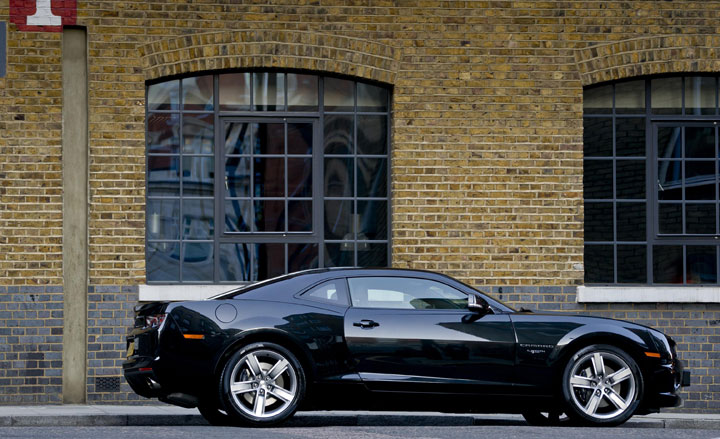
Arguably, buying any form of four wheeled personal transportation makes an explicit statement of intent. And as much as you pretend that all you care about is function, efficiency and economy, there is always a subtle (or not so subtle) subtext that one hopes will draw in casual observers. However, there are also cars that do much more than tick the expected boxes. These are the machines that demand attention, marking their driver out as either a raging extrovert or a true connoisseur of bloody mindedness. Chevrolet's 2012 Camaro is one such machine.
Ever since the 1950s, the American sports car has been a breed apart from its European counterpart. Dispensing with standard performance attributes like handling and braking, the muscle car, as its name suggests, was all about power. As Detroit refined the breed, the muscle cars manufactured by Buick, Chevrolet, Dodge, Mercury, Plymouth, Pontiac et al, became all about the look, typically utilising a brutish, four-square coupé body broadly developed from the Italian school of car design; neat, well proportioned, but hinting at the power within.
Muscle cars, and their slightly less outlandish siblings, the pony cars, fell out of favour in the fuel-starved 1970s and the American industry's precipitous decline in the 80s, 90s and beyond in the face of rising import sales. In all this time, stalwarts such as the Ford Mustang and Chevrolet Camaro never actually went away, they just lost sales and relevance in a marketplace that prized sophistication over brute force. But in 2005, Ford stepped back to go forward, and introduced the fifth generation Mustang as a glorious slice of retro fetishism, an explicit re-tread of the model's glory days from the 1960s and 70s. Rivals Chevrolet weren’t far behind, and in 2006 the Camaro concept was unveiled.
Although the Camaro is made in liberal-harbouring, gun-fearing, French-loving Canada, rather than Detroit, the spiritual home of heavy American metal, it does a good job of sugar-coating the nostalgia. If the late Sergio Pininfarina was the Federico Fellini of car design, the men and women behind the 2012 Camaro are the motor industry's equivalent of Michael Bay. This is turn-it-up-to-11 car design, all hard edges, and curves shaped with a trowel.
Sure, there are dubious details, such as the 300 mph speedo, one of the most pointless pieces of automotive braggadocio ever. The windscreen is flanked with pillars as thick as tree trunks that obscure visibility at junctions, while left hand drive and buttress-like C-pillars make negotiating roundabouts something of a lottery. Overall, the overall effect is seductive. The Camaro's internal architecture is evocative, with a great broad sweep of dash beneath the narrow slot of a windscreen, out of which lies the chunky power bulge on the bonnet, helpfully adorned with a red slash of graphics to mark this out as a 45th anniversary car.
Power is not lacking. 400+ horsepower is pushed out by a big old-school V8, helping propel this big, broad and hefty car to some pretty startling speeds. In fact, the Camaro doesn't disgrace itself in any comparisons with its European and Japanese rivals, straight line or curved, which is far more than can be said for its forebears. Specification is a little limited, with no sat navigation and a fair chunk of dashboard given over to oil pressure, temperature and battery voltage gauges that up the retro style without actually informing.
Then there's the issue of the statement. No-one buys these cars for a quiet life, especially outside the US, where their brawn is matched only by their rarity. But if you're in the slightest bit tempted by the sight of this bewitching object, be comforted by the news that the Camaro is actually rather likeable.
Against all odds, Chevrolet has turned in a characterful, bold and almost practical coupé, something that can more than hold its own with the home team (ignoring things like fuel consumption and sheer physical size). 2012 marks the Camaro's 45th anniversary, and the car shown here gets a few tweaks over the model that made its European debut in 2010. Practically half a century after America defined its own distinct sporting identity, the country is finally winning over the old world.
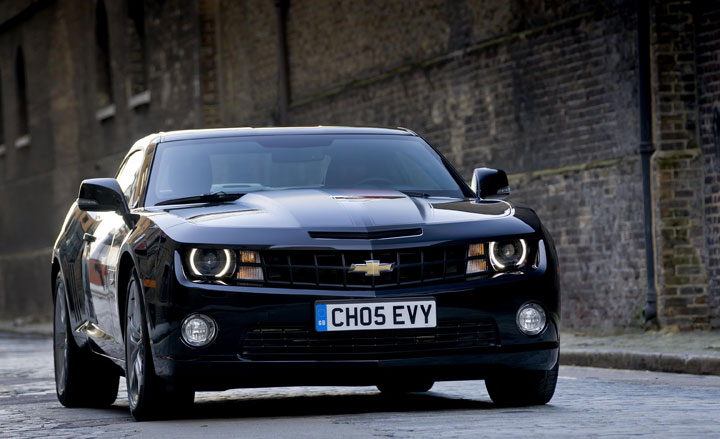
Power is not lacking. 400+ horsepower is pushed out by a big old-school V8, helping propel this big, broad and hefty car to some pretty startling speeds
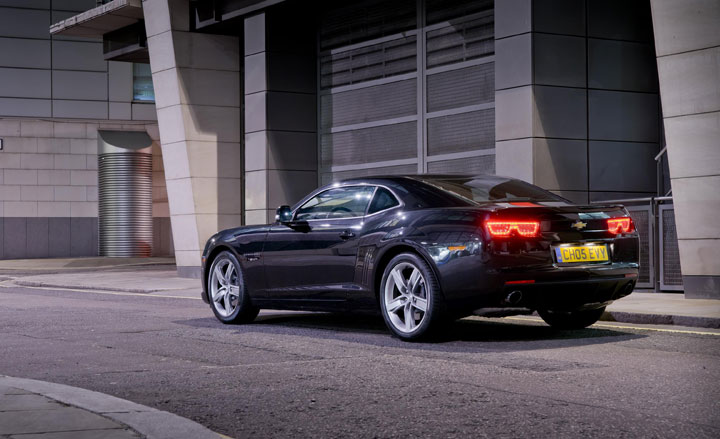
2012 marks the Camaro's 45th anniversary, and the car shown here gets a few tweaks over the model that made its European debut in 2010
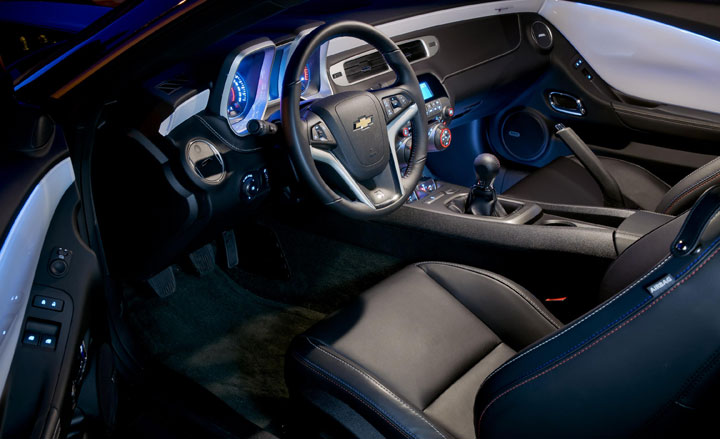
The Camaro's internal architecture is evocative, but specification is limited, with no sat navigation and a fair chunk of dashboard given over to oil pressure, temperature and battery voltage gauges that up the retro style without actually informing
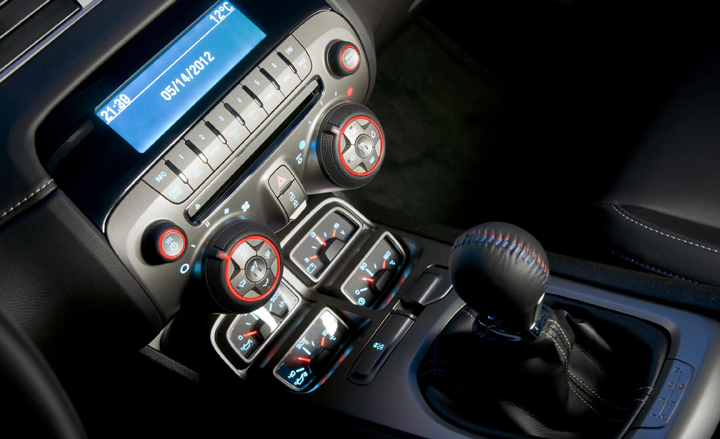
The Camaro doesn't disgrace itself in any comparisons with its European and Japanese rivals, straight line or curved, which is far more than can be said for its forebears
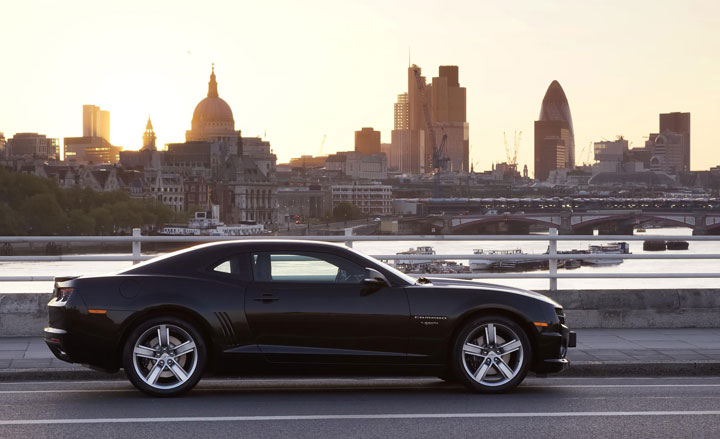
No-one buys these cars for a quiet life, especially outside the US where their brawn is matched only by their rarity. But if you're in the slightest bit tempted by the sight of this bewitching object, the Camaro is actually rather likeable
Wallpaper* Newsletter
Receive our daily digest of inspiration, escapism and design stories from around the world direct to your inbox.
Jonathan Bell has written for Wallpaper* magazine since 1999, covering everything from architecture and transport design to books, tech and graphic design. He is now the magazine’s Transport and Technology Editor. Jonathan has written and edited 15 books, including Concept Car Design, 21st Century House, and The New Modern House. He is also the host of Wallpaper’s first podcast.
-
 All-In is the Paris-based label making full-force fashion for main character dressing
All-In is the Paris-based label making full-force fashion for main character dressingPart of our monthly Uprising series, Wallpaper* meets Benjamin Barron and Bror August Vestbø of All-In, the LVMH Prize-nominated label which bases its collections on a riotous cast of characters – real and imagined
By Orla Brennan
-
 Maserati joins forces with Giorgetti for a turbo-charged relationship
Maserati joins forces with Giorgetti for a turbo-charged relationshipAnnouncing their marriage during Milan Design Week, the brands unveiled a collection, a car and a long term commitment
By Hugo Macdonald
-
 Through an innovative new training program, Poltrona Frau aims to safeguard Italian craft
Through an innovative new training program, Poltrona Frau aims to safeguard Italian craftThe heritage furniture manufacturer is training a new generation of leather artisans
By Cristina Kiran Piotti